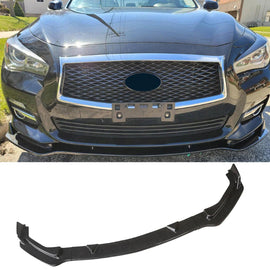The world of aftermarket automotive modifications is a playground for enthusiasts seeking to push the boundaries of their vehicle's performance and aesthetics. However, with great power comes great responsibility. In this blog post, we will explore the delicate balance between enhancing performance and maintaining safety when it comes to aftermarket upgrades.

1. Engine Performance Upgrades
- Engine performance upgrades can significantly boost a vehicle's power output. By optimizing fuel injection, ignition timing, and air-fuel ratios through performance chips and ECU remaps, we can increase horsepower and torque by 5-15%. Forced induction systems like turbochargers and superchargers can provide a substantial performance boost, but they require careful tuning to avoid engine damage and ensure the engine's components can handle the increased stress.
2. Suspension and Handling Modifications
- Upgrading to performance suspension components, such as stiffer springs and performance dampers, can reduce body roll and improve cornering grip, potentially reducing lap times by up to 10% on a racetrack. It's crucial to maintain the balance of the suspension geometry when making modifications to avoid uneven tire wear and poor handling characteristics.
3. Braking System Enhancements
- Enhancing the braking system with performance brake pads, larger rotors, and multi-piston calipers can significantly reduce stopping distances, which is critical for high-performance vehicles or those used in track days. High-performance brake fluids with higher boiling points are less likely to break down under extreme conditions, ensuring optimal braking performance.

4. Aerodynamics and Weight Reduction
- Aerodynamic modifications, such as front splitters, rear spoilers, and diffusers, can improve a vehicle's stability at high speeds by reducing lift. Wind tunnel testing has shown that these modifications can increase downforce, enhancing traction and cornering ability. Weight reduction is a fundamental aspect of improving performance, and using lightweight materials can lower the vehicle's center of gravity, improving handling and reducing braking distances.
5. Legal and Safety Considerations
- Not all aftermarket modifications are legal on public roads, so it's essential to check local regulations before making modifications, especially those that affect emissions, lighting, or vehicle structure. Safety should be the primary concern when modifying a vehicle. Ensuring that modifications are professionally installed and do not compromise the vehicle's structural integrity or safety systems is crucial.

Aftermarket modifications offer exciting opportunities for vehicle enthusiasts to personalize their rides and enhance performance. However, it's essential to approach these modifications with a thorough understanding of their impact on vehicle dynamics and safety. Responsible modification, guided by expert advice and adherence to legal standards, can lead to a rewarding and safe driving experience.
For more information on aftermarket modifications and their effects on vehicle performance and safety, subscribe to our newsletter. We'll keep you updated on the latest trends, product reviews, and technical insights in the world of automotive customization.
































